- Hypergraph:
- Hypergraph =
a generalization of the
graph concept
- Edge in
hypergraph:
- An edge in a hypergraph can connect multiple vertices
Wikipedia: click here
- Hypergraph =
a generalization of the
graph concept
- Example:
- Vertices:
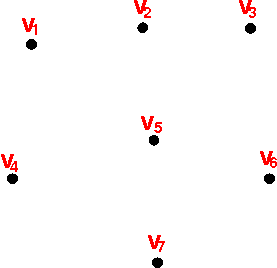
- Hyper-edge
e1 = {v1,
v2, v3}
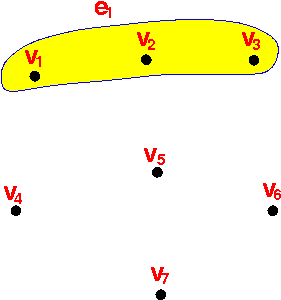
- Hyper-edge
e2 = {
v2, v3}
(is a "normal" edge that
connects 2 vertices)
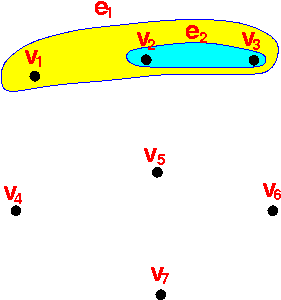
- Hyperedge can be
a singleton node:
e3 = {v4}
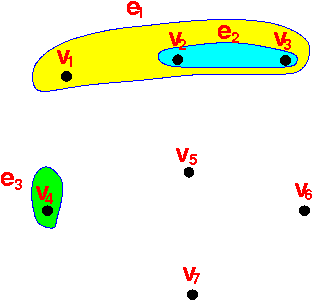
- Vertices:
- Representing
attributes:
- Each attribute is a node in the hypergraph
- Representing
relations
(e.g., R(A,B,C)):
- Each relation is a hyperedge consisting of the attributes (= nodes) of the relation
- Example 1:
- Relations:
R(A, B) S(B, C) T(C, A)Hypergraph that represents the 3 relations:
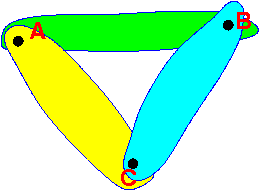
- Relations:
- Example 2:
- Relations:
R(A, B, C) S(C, D, E) T(A, E, F) U(A, C, E)Hypergraph that represents these 4 relations:

- Relations:
- Ear (edge) in a
hypergraph:
- A hyperedge E is an
ear (ear edge) if:
- There is an hyper-edge G
such that every node in
hyper-edge E is
either:
- the node is
only found in
E
(and not found in
any other
hyper-edge)
- the node is also found in G
- the node is
only found in
E
(and not found in
any other
hyper-edge)
- There is an hyper-edge G
such that every node in
hyper-edge E is
either:
- A hyperedge E is an
ear (ear edge) if:
- Example:
- The hyperedge
{A, E, F}:
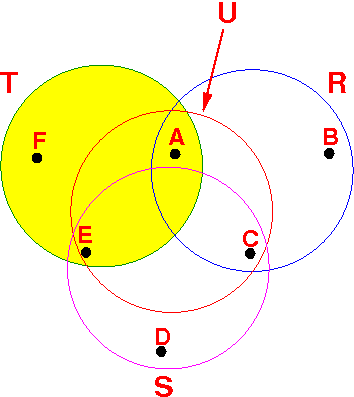
is an ear because:
- node A is in T{A,E,F} and U{A,C,E}
- node E is in T{A,E,F} and U{A,C,E}
- node F is only in in T{A,E,F} (and not in any other hyperedge)
Graphically:
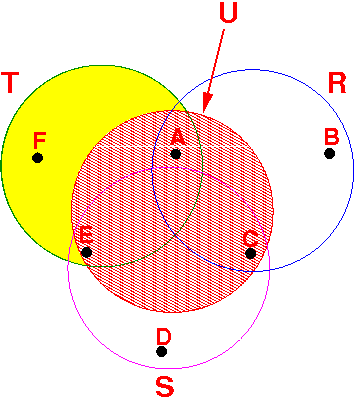
- The hyperedge
{A, E, F}:
- Consumes:
- The hyper-edge U:

that is used to determine that the hyper-edge T is an ear edge, is said that:
- The hyper-edge U consumes the ear edge T
- The hyper-edge U:
- Ear reduction:
- Ear reduction = the remove of an ear (edge) --- along with any nodes that only appear in the ear (edge) --- from the hypergraph
- Example:
- The hyperedge
T{A,E,F} is an
ear:

After ear reduction, the (new) hypergraph is:
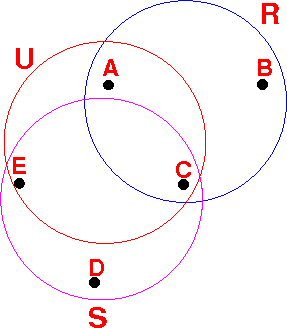
- The hyperedge
T{A,E,F} is an
ear:
- Acyclic hypergraph:
- Acyclic hyper-graph = a hyper-graph that can be reduced to a single hyper-edge using a serie of ear reductions
- Example of an
acyclic hyper graph:
- Original hyper-graph:

R{A,B,C}, S{C,D,E} and T{A,E,F} are ears (ear hyper-edges)
- After reducing
T{A,E,F}:

R{A,B,C} and S{C,D,E} are ears
- After reducing
R{A,B,C}:
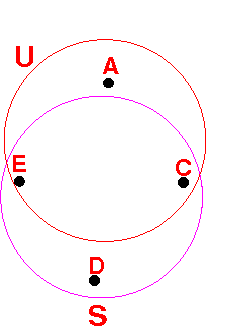
S{C,D,E} and U{A,C,E} (!!!) are ears
- After reducing
U{A,C,E}:
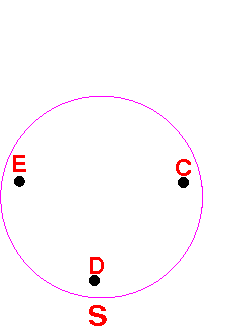
We have a single (hyper-)edge !!!
- Therefore:

is an acyclic hyper graph
- Original hyper-graph:
- The following
hyper graph is
non acyclic
(i.e., cannot be
reduced to a
single hyper-edge):

Reason:
- Hyper edge
{A,B} is
not an
ear (edge)
- There are no node that
are only in
{A,B}
- {A} is in {A,C}
- {B} is in {B,C} (a different edge)
- There are no node that
are only in
{A,B}
- Same argument holds for the hyper edges {B,C} and {A,C}
- Hyper edge
{A,B} is
not an
ear (edge)